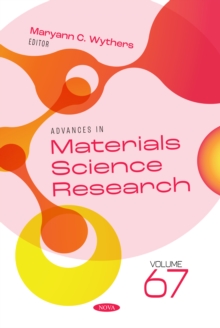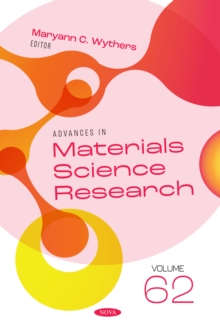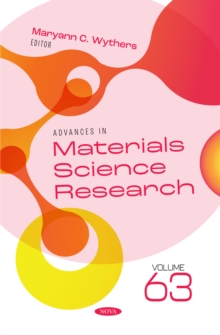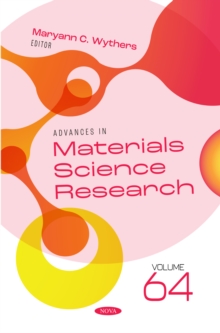
Advances in Materials Science Research. Volume 61 PDF
Edited by Maryann C. Wythers
Part of the Advances in Materials Science Research series
Description
This volume includes eight chapters that detail advances in materials science research.
Chapter One focuses on the recent progress in the sulfur host-based smart cathode materials with high areal sulfur loading and superior polysulfide shuttle effect tackling the ability to develop futuristic Li-S batteries.
Chapter Two discusses the application of graphitic carbon nitride in the field of metal, gas, organic pollutants, and pharmaceutical sensing.
Chapter Three explains the potential applications of tenary Ti2AlC carbide ceramics.
Chapter Four reveals that the MXenes can efficiently resolve the shuttle barrier and enhance the electrochemical performance of Li-S batteries.
Chapter Five highlights insights from different computational approaches that uncover the electronic structure modifications responsible for enhanced properties, and provide a guide to the rational design of doped anatase.
Chapter Six studies various aspects of the intrinsic relationship between the behavior of the keratin fiber and the disulfide bond.
Chapter Seven explains why the use of polyurethane foam as a solid support in fermentation processes and microbial kinetics has been more frequently used for different biotechnological applications.
Lastly, Chapter Eight introduces a new method for producing cellulose nanofibers at the air/water interface by employing the approach of Langmuir monolayer.
Information
-
Download - Immediately Available
- Format:PDF
- Pages:190 pages
- Publisher:Nova Science Publishers, Inc.
- Publication Date:02/06/2023
- Category:
- ISBN:9798886979008
Information
-
Download - Immediately Available
- Format:PDF
- Pages:190 pages
- Publisher:Nova Science Publishers, Inc.
- Publication Date:02/06/2023
- Category:
- ISBN:9798886979008










